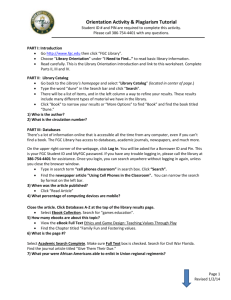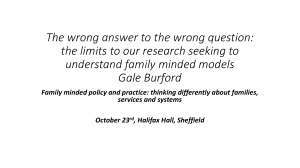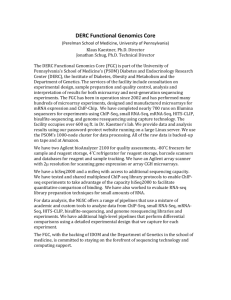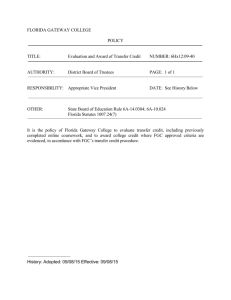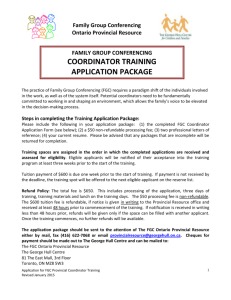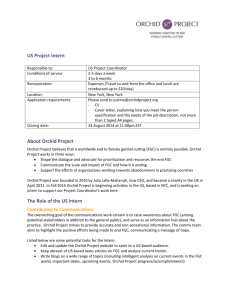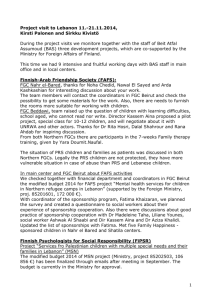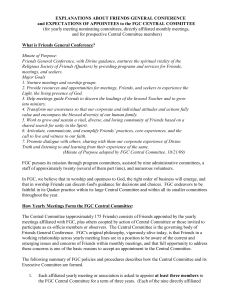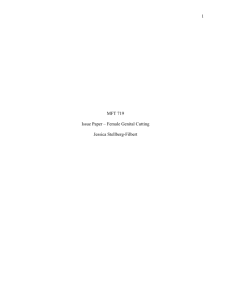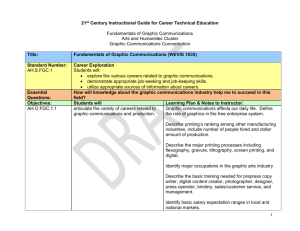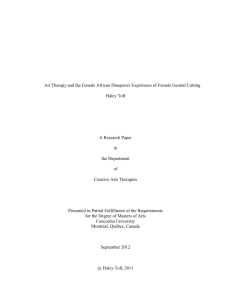Paper 1
advertisement
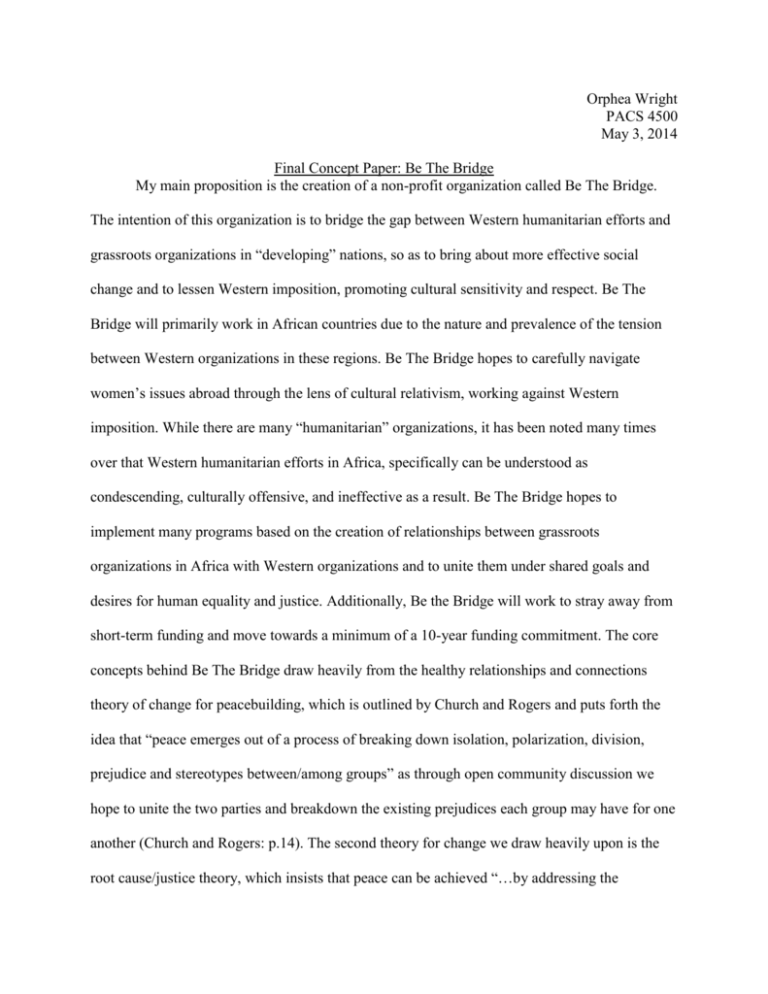
Orphea Wright PACS 4500 May 3, 2014 Final Concept Paper: Be The Bridge My main proposition is the creation of a non-profit organization called Be The Bridge. The intention of this organization is to bridge the gap between Western humanitarian efforts and grassroots organizations in “developing” nations, so as to bring about more effective social change and to lessen Western imposition, promoting cultural sensitivity and respect. Be The Bridge will primarily work in African countries due to the nature and prevalence of the tension between Western organizations in these regions. Be The Bridge hopes to carefully navigate women’s issues abroad through the lens of cultural relativism, working against Western imposition. While there are many “humanitarian” organizations, it has been noted many times over that Western humanitarian efforts in Africa, specifically can be understood as condescending, culturally offensive, and ineffective as a result. Be The Bridge hopes to implement many programs based on the creation of relationships between grassroots organizations in Africa with Western organizations and to unite them under shared goals and desires for human equality and justice. Additionally, Be the Bridge will work to stray away from short-term funding and move towards a minimum of a 10-year funding commitment. The core concepts behind Be The Bridge draw heavily from the healthy relationships and connections theory of change for peacebuilding, which is outlined by Church and Rogers and puts forth the idea that “peace emerges out of a process of breaking down isolation, polarization, division, prejudice and stereotypes between/among groups” as through open community discussion we hope to unite the two parties and breakdown the existing prejudices each group may have for one another (Church and Rogers: p.14). The second theory for change we draw heavily upon is the root cause/justice theory, which insists that peace can be achieved “…by addressing the underlying issues of injustice, oppression/exploitation…”which we take into account as our focus remains on women’s rights and empowerment, through addressing underlying issues of sexism and patriarchy, that exist all over the world (Church and Rogers: p.14). Additionally, we draw from the institutional development theory as we hope to enact change and progress on the structural level, the grassroots mobilization theory through our direct engagement with grassroots organizations who are given the voice of our organization, the economics theory by understanding and targeting economic incentives, and the public attitudes theory as we hope to create a new dialogue around female sexuality and equity (Church and Rogers). Concept I: Menstrual Cups The first concept of Be The Bridge is aimed to address the issue of girls not being able to attend school due to menstruation as tampons are not easily accessible and very expensive, and the use of alternative solutions (such as leaves) has lead to health issues. DARE Women’s Foundation in Tanzania works on the grassroots level and has started to target this issue. Yet, arguably, more could be done promote equal opportunity to education and at the same time increase sustainability. Western organizations have begun to manufacture menstrual cups which actually have less health issues associated with them than tampons and they are reusable so they produce less waste. The issue in the case of the menstrual cup takes form economics theory, and institutional development theory heavily. In terms of economics, Western companies manufacturing this product could be incentivized to work with organizations in Tanzania to work towards solving this issue of girls missing school. In terms of institutional development, striving towards equity in terms of access to education is key here. Be The Bridge would work with various manufacturing organizations as well as grassroots organizations to ensure that this product is desired in communities affected by this issue and not simply imposed on these communities. A challenge to this particular project is that ideally grassroots organizations like DARE would be able to either learn to make the cups themselves or somehow not be fully reliant on Western companies for access to this product. Possibly, raw materials could be accessed and making these cups could occur within contexts like Tanzania as an entrepreneurial endeavor, creating economic growth locally and not fostering dependence on Western corporations. Concepts II and III: Addressing FGC The second and third concepts Be The Bridge would work to address is the issue over female genital cutting as it has become a divided conflict between Westerners who firmly want to end the practice and practitioners of this tradition, which is most prevalent in regions of Africa. While FGC can be seen as a human rights violation done to unconsenting women and girls, it is also a deeply embedded tradition in many African communities and must be understood as a socially and culturally significant practice. Yet, serious health risks occur as a direct result of FGC such as blood clotting, immense pain, troubles with giving birth, and death. The many complications of FGC remain unknown to communities who practice it and so taking an education angle would be ideal. In order to implement education programs around FGC, we must consider the healthy relationships and connections theory, emphasizing inter-group dialogue and joint efforts as education around FGC must not be organized and led by Westerners. In order for it to be successful, respectful, and peaceful, community members must be the ones to take on the job as project leaders. By sharing information about all the highly dangerous and detrimental outcomes of the practice of FGC, it is likely that well-intentioned community members will want to join the effort to abandon the practice, yet this must not be pushed upon communities by Western organizations. Rather, open and nonjudgmental dialogue must be fostered in order for this to be successful. The first step in the program would be comprehensive sexual education regarding human sexuality, aimed to de-bunk myths about female sexuality which promote sexism, as well as education on the many negative health ricks of the practice of FGC. The approach Be The Bridge would take would involve bringing the community together and opening a space for community dialogues and problem solving. Drawing upon LeBaron and Carstarphen’s “common ground dialogue process”, we will also focus on finding common ground by working to unite Western organizations fighting against FGC as well as communities who practice this tradition under the shared desire of the health of girls and women in their communities. Many practitioners of FGC are simply not aware of the connection of the health issues their communities face and the connections these issues have to FGC. Through an open dialogue between the two parties on this issue, the goal here is to unite the two parties under a common goal of promoting the health and well-being of women and girls and to use that shared goal as a platform for moving further to work towards gender equality based on the issue of FGC. The second implementation of the education program will be in schools to also educate about the negative health ricks of FGC but also to de-stigmatize the female body that has not undergone the procedure so that a woman who has not been cut no longer risks being rejected from her community and seen as undesirable for marriage. This idea draws from the public attitudes theory as there are deeply embedded cultural beliefs regarding FGC and in order to see this practice no longer occurring, we must normalize women who have not undergone the procedure and in many ways change cultural beauty ideals and standards. By implementing the community dialogue process, the aim is to allow for members of both parties voices to be heard and to unite these voices under what are clearly common interests, which have been convoluted by the failure to approach issues with the necessary cultural sensitivity and respect for a diversity of traditions. The third step of the addressing FGC issue comes as a “last resort” compromise wherein if communities after extensive open dialogue and education still strongly do not want to end the practice of FGC, a compromise between the two groups should be investigated. The “last resort” compromise Be The Bridge is willing to address is the medicalization of the practice, bringing the practice into the hands of trained professionals who have access to sterile and sanitary tools and have the proper education to know how to perform the procedure in a manner that lowers the health risks to these women and girls. While it may seem like a violent practice to many Westerners, FGC is a deeply rooted tradition in many communities and must be understood as such. Additionally, taking into account cultural relativism, Western societies commonly perform male circumcision, which is not highly contested by Westerners. This compromise is akin to clean needles programs in the United States, which function based on the understanding that the activity in question is going to occur regardless, yet there are safer ways to go about it. By seriously considering this “last resort” compromise, Be The Bridge hopes to give back the deserved voice to these communities and fight Western imposition, and hopefully unite the two groups under a mutually shared desire towards safety and equality.

